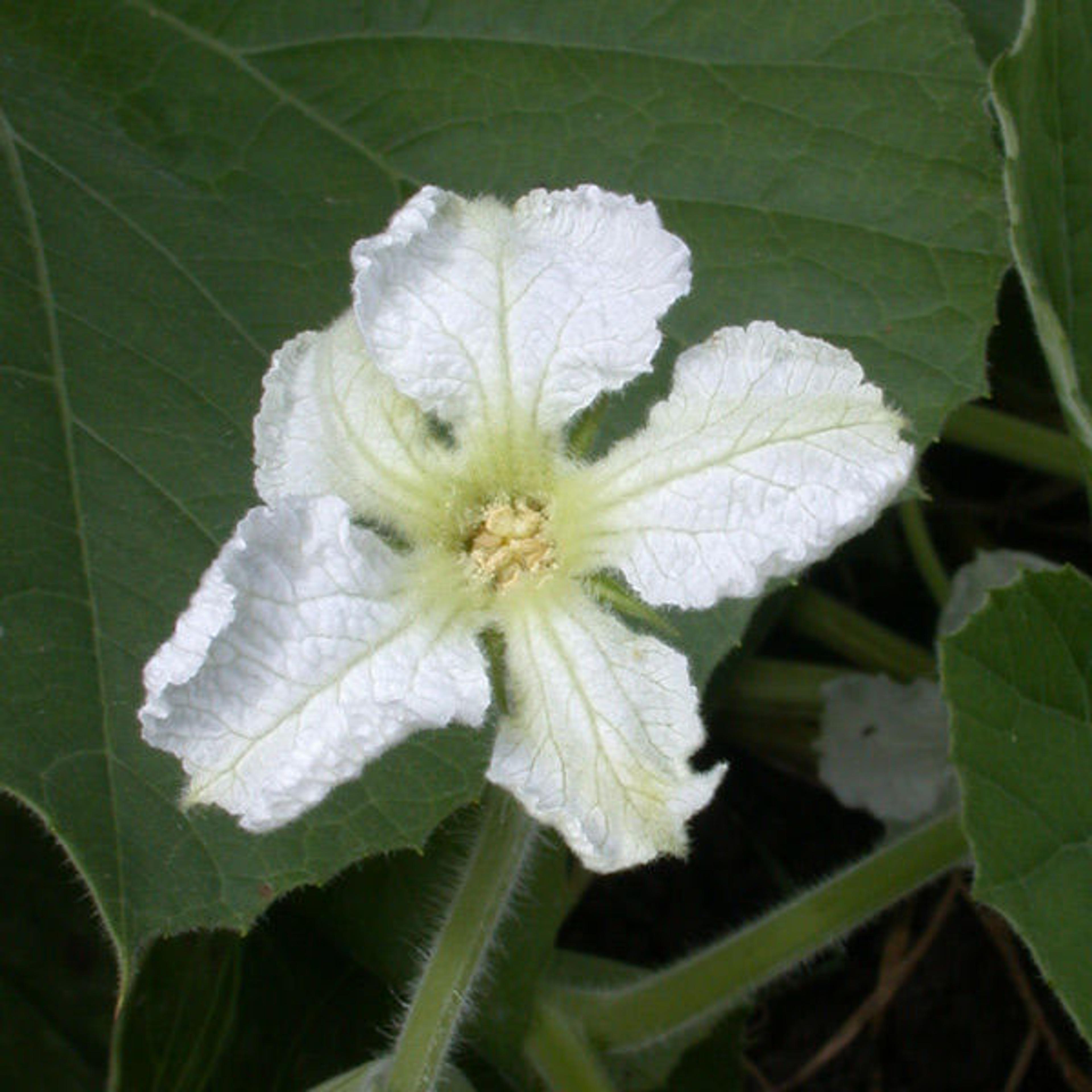On Voyages and Vessels

Gil de Siloe (Spanish, active 1475–1505). Saint James the Greater (detail), ca. 1489–93. Made in Burgos, Castile-León, Spain. Alabaster, gold, and paint; Overall: 18 1/16 in. (45.9 cm). The Metropolitan Museum of Art, New York, The Cloisters Collection, 1969 (69.88)
«But if you let the gourd stay
Enjoying the summer sun on its parent tree and only
set your blade to it late in the year, then after scooping
the flesh from its ponderous belly and shaving the sides
on a nimble lathe, you can put it to practical use as a vessel.
A pint this mighty paunch will sometimes hold, sometimes half a gallon or more; and if you seal your jar with gummy pitch it will keep wine good for many a day.» (Strabo 37)
In this passage, the ninth-century Frankish monk Walahfrid Strabo, or "Walahfrid the squint-eyed," extols the virtues of the bottle gourd, Lagenaria siceraria. One of the twenty-nine garden plants lovingly described in his seminal poem Hortulus, or "Little Garden," Strabo remarks not only on its practical functions as a vessel but, in a different passage, on its value as a table delicacy, "soaking up the rich fat in a piping dish."
The gourd's alimentary usage is often neglected in favor of its ornamental characteristics and use in crafts. Vilmorin-Andrieux, the eminent nineteenth-century Parisian seed house, dismissed its table use, declaring it purely ornamental (Vilmorin-Andrieux 269). But this hard-shelled gourd was the squash of medieval Europe. The species now commonly referred to as squash or pumpkin belong to the genera Cucurbita, which is indigenous to Central and South America and was not known to medieval Europeans. Lagenaria, on the other hand, was dispersed around the world and widely used in medieval Europe.
Lagenaria sp. likely originated in Africa and was dispersed and widely adopted in ancient times; for instance, archaeological evidence of its cultivation in Mexico exists from as early as 7000 b.c. (Van Wyk 223). While this transoceanic plant drift suggests evidence for pre-Columbian intercontinental travel, a more widely accepted explanation is that the buoyant fruits traveled on oceanic currents. Observations have demonstrated that following several months of saltwater immersion, the seeds—sealed inside the gourd's hard shell—remain viable.
Cultures around the world have made extensive use of the bottle gourd. It has been fashioned into instruments, bowls, ladles, and blowing horns (see examples on The Collection Online), as well as consumed as a vegetable. In India, the immature fruit is popular as a vegetable, and in Chinese medicine, it is used as a purgative. In South America, the traditional drink, yerba mate, is drunk from a gourd cup (Uphof 298).

Our gourd in the Bonnefont Herb Garden. Photograph by Wilson Santiago
Morphologically, the diversity of Lagenaria fruits is vast. Ours, in the Bonnefont Herb Garden, take much the same shape as the variety described by Strabo in that they "swell from a long, thin neck into huge bodies, their great mass broadening at the flanks. They are all belly, all paunch" (Strabo 37). Some are slender and serpentine, while others have swan-shaped necks or are perfect spheres.
Gourds are not difficult to grow, but, in a small, enclosed garden such as ours, they require close attention. Prone to powdery mildew and rampant growth, they need meticulous care to maintain their vines tidily within bounds. Left to their own devices, they would certainly cover the garden with, as Strabo described, "borrowed strength and, with a swimmers thrust, climb the steep roofs of the covered cloister" (Strabo 37).
With our limited space, we grew exactly one mature gourd, which we hope to harvest and cure.

Lagenaria flower from the Cloisters Garden Archives
Sources
Strabo, Walahfrid. Hortulus. Pittsburgh: Hunt Botanical Library, 1966.
Uphof, J.C.TH. Dictionary of Economic Plants. Tampa, Fla.: Lubrecht & Cramer Ltd, 2nd edition, 1968.
Van Wyk, Ben-Erik. Food Plants of the World. Portland, Oregon: Timber Press, 2006.
Vilmorin-Andrieux, MM. The Vegetable Garden. Berkeley, California: Ten Speed Press; English edition, 1981.
Caleb Leech
Caleb Leech is the managing horticulturist at The Met Cloisters.